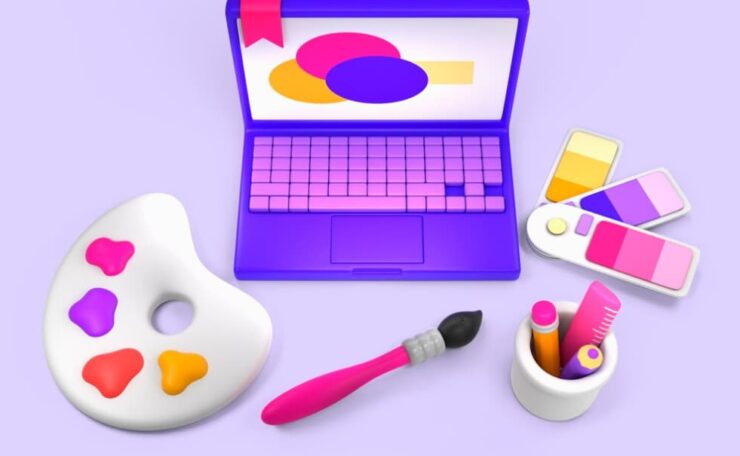Graphic design is a dynamic field that blends creativity with technical skills, requiring constant learning and adaptation to new tools, techniques, and trends. As the digital landscape evolves, graphic designers must stay ahead of the curve to remain competitive. One innovative way to enhance learning in this field is by integrating artificial intelligence (AI) into the education process. AI quizzes in graphic design are revolutionizing how designers sharpen their skills, providing interactive, personalized learning experiences that foster creativity and mastery of design principles.
The Role of AI Quizzes in Graphic Design
AI quizzes are a game-changer in graphic design education, offering an interactive way to test knowledge, practice skills, and receive real-time feedback. Traditional methods of learning—such as textbooks, lectures, or self-paced tutorials—often lack the level of engagement that today’s learners crave. AI-powered quizzes, however, provide a more immersive and engaging way to learn, enabling designers to actively participate in their education and measure their progress.
For instance, an AI quiz might challenge learners to identify different design elements, color theory applications, or layout principles by presenting visual examples that require quick analysis. These quizzes can adapt to the learner’s skill level, offering easier questions for beginners or more complex design challenges for advanced students. This adaptability ensures that all learners, regardless of experience, can benefit from AI-driven learning tools.
Incorporating AI tools for graphic designers into educational programs not only helps students retain critical design concepts but also enhances their ability to apply those concepts in practical, real-world scenarios. By testing their knowledge through AI quizzes, designers can refine their skills in typography, visual hierarchy, branding, and more, all while receiving personalized feedback that guides their growth.
Benefits of AI Tools for Graphic Designers
The integration of AI tools in design education offers several key benefits for students and professionals alike. AI tools for graphic designers can help streamline the learning process, making it easier to grasp complex concepts and techniques. Additionally, AI quizzes can introduce designers to cutting-edge tools and trends in the industry, ensuring they remain proficient in the latest design practices.
One significant advantage of using AI in design education is the ability to track progress and receive instant feedback. This real-time feedback loop is invaluable for students who want to improve their skills efficiently. For example, after taking an AI quiz on color theory, a designer might receive suggestions on how to improve their understanding of complementary colors or contrast, along with visual examples. This immediate feedback helps students correct mistakes, solidify their understanding of key concepts, and develop confidence in their design decisions.
Moreover, AI quizzes can cover a wide range of design topics, from basic principles like alignment and balance to more advanced techniques such as user interface (UI) design and branding strategies. This versatility ensures that designers can continually expand their knowledge and skill set, regardless of where they are in their career journey.
AI in Design Education: Fostering Creativity and Innovation
Creativity is at the heart of graphic design, and AI in design education can play a pivotal role in nurturing that creativity. AI quizzes not only test technical knowledge but also encourage designers to think critically and creatively about their design choices. By challenging learners with real-world design problems, AI quizzes help designers develop the creative thinking skills needed to succeed in the industry.
For example, a quiz might ask a designer to choose the best layout for a given design brief or to select the appropriate color scheme for a brand’s identity. These types of challenges simulate real design projects, allowing learners to apply theoretical knowledge in practical scenarios. By working through these design problems, designers can build the confidence needed to tackle actual client projects or creative endeavors.
Additionally, AI quizzes can introduce learners to various design styles and artistic movements, broadening their creative horizons. A quiz might feature questions about Bauhaus design principles or the use of minimalism in modern branding. This exposure to different styles and techniques helps designers refine their own creative voice and approach to design.
How AI Quizzes Can Revolutionize Graphic Design Courses
AI-powered quizzes are not only beneficial for individual learners but can also be a valuable tool for graphic design educators. Instructors can use AI tools to create quizzes that assess student comprehension, identify areas where students may need additional support, and track overall class progress. These insights allow educators to tailor their teaching methods to the needs of the students, ensuring a more effective learning experience.
Moreover, AI quizzes can be integrated into online learning platforms, allowing for flexible, self-paced learning. This is particularly important in today’s digital-first world, where many students prefer to learn on their own time and at their own pace. By incorporating AI in design education, educators can provide a more personalized and accessible learning environment, helping students to succeed in their studies.
One such tool for creating engaging quizzes is a youtube video question generator, like the one offered by Hearify. This tool allows educators to create quizzes based on YouTube videos, providing students with an interactive way to learn from video content while testing their understanding of the material. For graphic design students, this means they can watch tutorials, case studies, or design critiques and immediately test their knowledge through quizzes, reinforcing key concepts.





